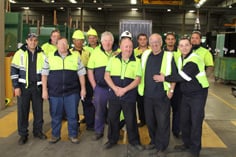
When we were all young children, we all used to bug our parents with lots of "Why?" questions. And while this can test even the calmest of parents, the truth is...
 In the book First, Break all the Rules by Marcus Buckingham, his research found the relationship between an employee and their manager determined how long an employee will stay in a company and their level of productivity.
In the book First, Break all the Rules by Marcus Buckingham, his research found the relationship between an employee and their manager determined how long an employee will stay in a company and their level of productivity.
Managers are catalysts. They help speed up the employee's skills meeting the needs of the company. And they help the employee find their path of least resistance to their goals.
Staff that have a good relationship with their supervisor or manager enjoy their job more and stay at the company longer. Great managers also communicate better.
So is there a link between good supervisors and good safety?
According to a research study in the Journal of Safety Research in 2006, titled "Production supervisor impacts on subordinates' safety outcomes: An investigation of leader-member exchange and safety communication" by Michael et al, the answer is yes.
Various research studies have shown that positive communication relations between supervisors and employees improves safety performance.
Importantly, where employees are able to more freely raise safety concerns because their supervisor encourages communication, fewer accidents occur, provided that management takes action on the safety issues.
A good supervisor fosters positive safety attitudes and encourages sharing important safety-related information.
In essense, poor morale among staff and high turnover can often be attritutable to one bad manager. To improve the performance of supervisors, which will in turn, improve the safety performance of staff, train supervisors to:
Good supervisors who are respected by workers are like gate-keepers between staff and senior management.
If you're in senior management and you want your initiatives to be accepted by frontline staff, first get supervisor buy-in. Get them on-side and they’ll persuade workers to accept new initiatives. Get them off-side and you won't have any hope getting through any new initiatives - safety or otherwise.
The bottom line is hiring great supervisors ensures that the lines of comunication are kept open from top to bottom and bottom to top resulting in a safe, productive and high morale working environment.
But if you've hired potentially great supervisors who need help getting those crucial connect and collaborate skills improve, in order to improve your culture, then consider our innovative new training course 9 Creative Communication Techniques for Improved Toolbox Talks.

When we were all young children, we all used to bug our parents with lots of "Why?" questions. And while this can test even the calmest of parents, the truth is...

We've all heard the term "Death by PowerPoint" and the majority of us have been scarred by poor presentations and classroom learning techniques, at some point in our...